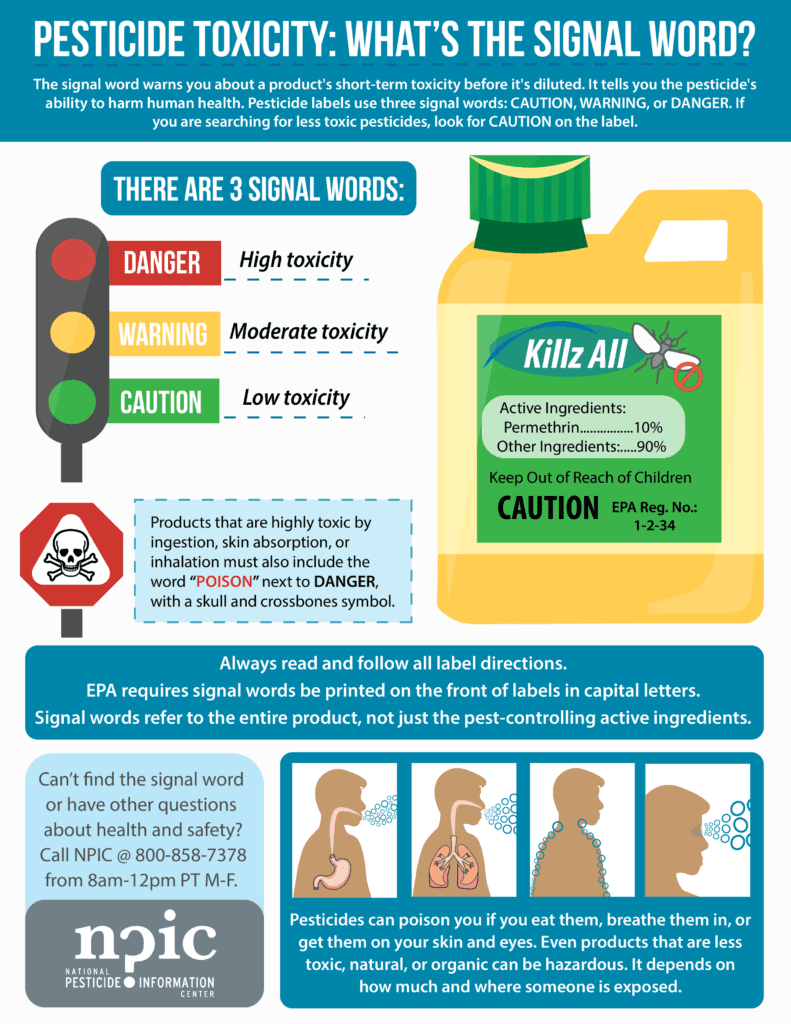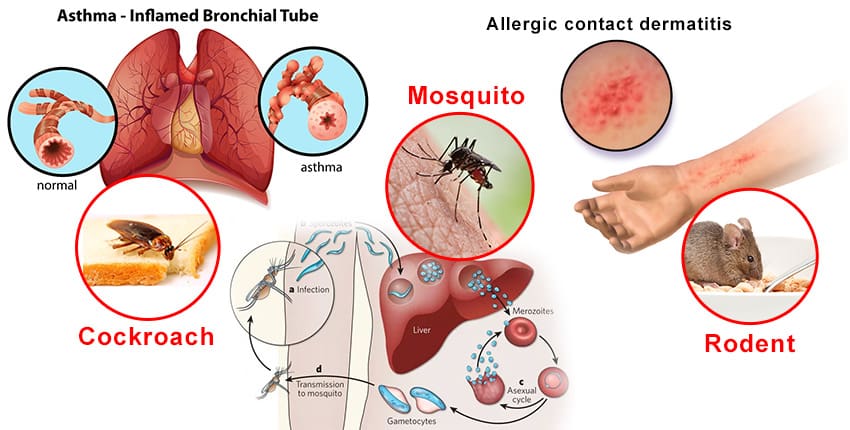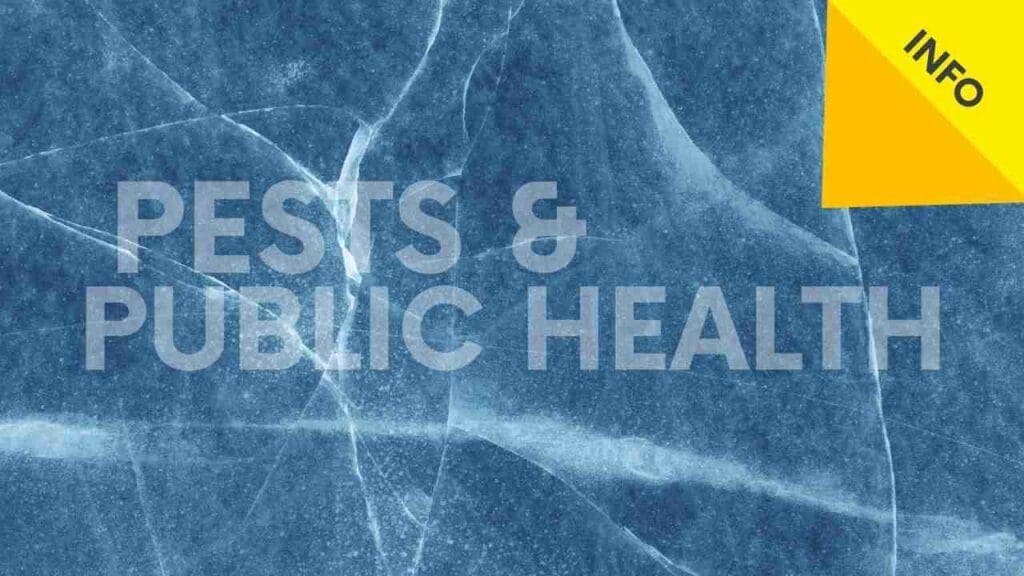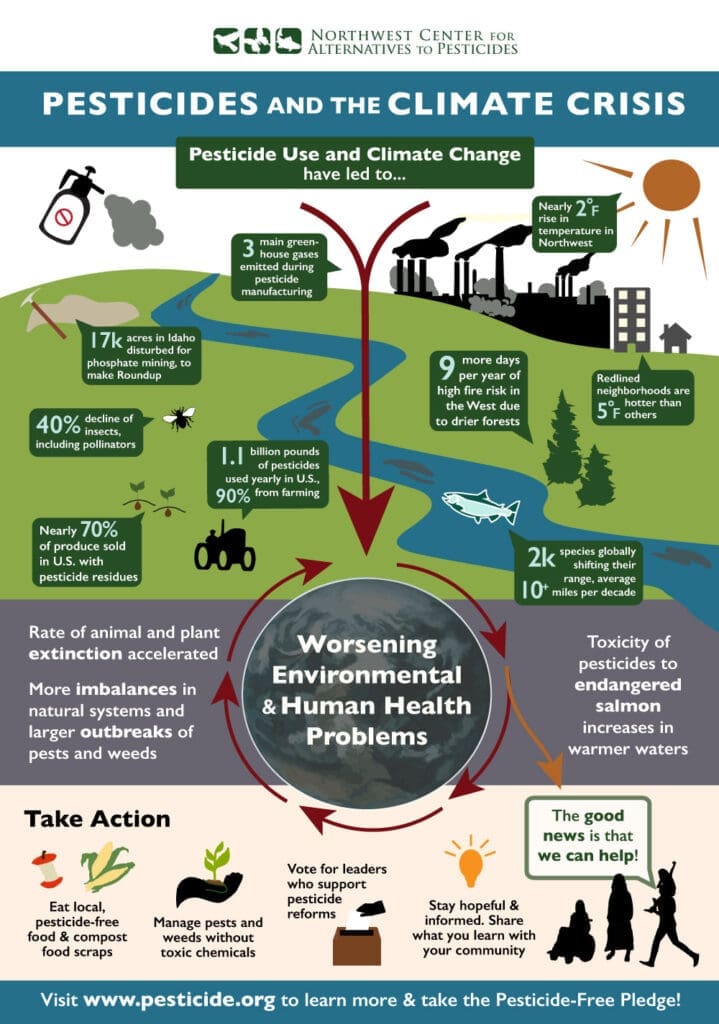In this informative article, you will gain valuable insights into the connection between pests and public health. Discover the hidden risks that these unwanted guests pose and how they can affect your well-being. From disease transmission to property damage, pests can create a multitude of problems. Through this understanding, you will not only become more aware of the importance of pest control but also learn about effective solutions that can help you protect yourself and your loved ones. So, let’s explore the world of pests and their impact on public health, ensuring a safer and healthier environment for all.

Understanding the Risks of Pests
Introduction to pests and public health
Pests are not just annoying creatures that invade our homes and spaces; they can also pose significant risks to public health. Whether it’s through direct contact, contamination of food and water, or the spread of diseases, pests can have serious consequences for our well-being. It is crucial to understand these risks and take necessary measures to prevent and control them.
Common pests and their health risks
Different pests can bring about various health risks. Mosquitoes, for example, are known to transmit diseases such as malaria, dengue fever, and Zika virus. Rodents like rats and mice can contaminate food and surfaces with their droppings, which can cause Salmonellosis and Hantavirus Pulmonary Syndrome. Cockroaches can trigger asthma attacks and spread pathogens like E. coli and Salmonella. Bed bugs can cause allergic reactions and skin infections. Understanding the specific health risks associated with common pests can help us prioritize prevention and control efforts.
How pests contribute to the spread of diseases
Pests play a significant role in the transmission and spread of diseases. They act as vectors, carrying pathogens from one host to another. Mosquitoes, for instance, can infect humans with malaria parasites when they bite an infected person and then bite a healthy individual. Similarly, ticks can transmit Lyme disease, and fleas can spread the bubonic plague. Pests are capable of spreading various diseases, making it crucial to eliminate their presence to minimize these risks.
Health effects of pest infestations
Pest infestations can have negative impacts on human health. Beyond the direct risks of bites and stings, pests can also lead to respiratory issues, allergies, and mental health problems. Breathing in pest droppings and excreta can cause respiratory illnesses such as asthma and allergies. The presence of pests in the home can trigger anxiety and stress, impacting our mental well-being. Additionally, children and the elderly are especially vulnerable to pest-related health issues, making it essential to maintain a safe and pest-free environment for their well-being.
Prevention and Control Measures
Importance of pest prevention
Prevention is key when it comes to managing pests and safeguarding public health. By implementing preventive measures, we can minimize the chances of pests infesting our homes and spaces in the first place. This involves maintaining cleanliness and hygiene, sealing cracks and entry points, and proper waste management. By focusing on prevention, we can reduce the risks and potential harm caused by pests.
Effective pest control methods
In cases where prevention is not enough, it becomes crucial to implement effective pest control methods. Pest control involves eliminating or reducing pest populations to manageable levels. This can be achieved through various techniques such as trapping, baiting, and using insecticides. The use of professional pest control services can also help ensure effective eradication and long-term prevention.
Integrated Pest Management (IPM) approach
Integrated Pest Management (IPM) is a holistic approach to pest control that focuses on long-term solutions and minimizing risks to human health and the environment. It combines various strategies such as biological control, habitat modification, and targeted pesticide use. By integrating multiple methods, IPM aims to manage pests in the most effective and environmentally-friendly way possible.
Safe and eco-friendly pest control products
When choosing pest control products, it is important to prioritize safety and environmental considerations. Opting for safe and eco-friendly alternatives can help reduce the risks associated with conventional pesticides. Look for products that have earned certifications or labels indicating their safety for use around humans and pets. Additionally, exploring natural remedies and non-toxic solutions can provide effective pest control without compromising public health or the environment.

Vector-Borne Diseases
Definition and examples of vector-borne diseases
Vector-borne diseases are illnesses transmitted to humans through the bites of infected arthropods, such as mosquitoes, ticks, and fleas. These diseases include malaria, dengue fever, Zika virus, Lyme disease, and the bubonic plague. Understanding the nature of these diseases is vital in implementing effective prevention and control measures.
Pests as disease vectors
Pests act as disease vectors by carrying pathogens from infected hosts to humans. Mosquitoes, for example, feed on the blood of infected individuals and then transmit diseases to healthy individuals through subsequent bites. Ticks can become infected after feeding on infected animals and then pass on the pathogens to humans. Fleas can similarly transmit diseases by feeding on infected animals and later infesting human hosts. Managing and eliminating these disease vectors is crucial in preventing the spread of vector-borne diseases.
Prevention and control of vector-borne diseases
Preventing and controlling vector-borne diseases requires a multi-faceted approach. This includes reducing the breeding habitats of mosquitoes and other disease-carrying insects, using insect repellents, wearing protective clothing, and securing screens on windows and doors. Additionally, targeted pest control methods can help manage the populations of disease-carrying pests and minimize the risks associated with vector-borne diseases.
Food Safety and Pests
Pests’ impact on food safety
Pests pose a significant risk to food safety. In food establishments such as restaurants, cafeterias, and kitchens, pests can contaminate food, surfaces, and equipment with their droppings, urine, and saliva. This contamination can lead to the transmission of pathogens, resulting in foodborne illnesses. Ensuring proper food safety practices and effective pest control measures is vital in protecting public health in food-related settings.
Common pests in food establishments
Certain pests are commonly found in food establishments, seeking shelter, warmth, and a readily available food source. These pests include cockroaches, rodents, flies, and stored product pests. Their presence not only threatens the quality and safety of the food being prepared and served but also damages the reputation of the establishment. Prompt identification, prevention, and control of pests are essential in maintaining high standards of food safety.
Preventing pests in food handling and storage
Preventing pests in food handling and storage is crucial to maintain food safety. This involves proper sanitation practices, such as regular cleaning, disinfection, and waste management. Ensuring that food is stored in sealed containers and maintaining a clean and organized environment are also effective preventive measures. By eliminating potential food sources and access points, we can greatly reduce the risk of pests infesting food handling and storage areas.
Pest control measures in the food industry
In the food industry, effective pest control measures are necessary to protect the integrity of the products and the health of consumers. This can be achieved through routine inspections, such as monitoring for signs of pest activity, implementing physical barriers, and using targeted treatments when necessary. Ongoing staff training and education on proper hygiene practices and pest identification can further enhance pest management efforts in the food industry.

Allergies and Asthma
Pests as triggers for allergies and asthma
Pests can act as triggers for allergies and asthma, exacerbating respiratory conditions. The allergens present in pest droppings, saliva, and body parts can cause allergic reactions and trigger asthma attacks in susceptible individuals. Understanding the connection between pests and respiratory conditions is crucial in managing and preventing these health issues.
Common pests causing allergies and asthma
Certain pests are more likely to cause allergies and asthma symptoms. Cockroaches are a common trigger due to the proteins present in their droppings, which can become airborne and inhaled. Dust mites, which are often found in bedding, upholstery, and carpets, can also contribute to respiratory problems. Additionally, rodents and their droppings can release allergens into the air, further exacerbating allergic reactions and asthma symptoms.
Reducing allergens and asthma triggers
Reducing allergens and asthma triggers is key in managing respiratory conditions. This includes regular and thorough cleaning to remove pest droppings, using allergen-proof covers for bedding and pillows, and implementing proper ventilation and air filtration systems. Minimizing the presence of pests through effective pest control measures is also essential in reducing allergens and asthma triggers in indoor environments.
Importance of pest control for allergy and asthma sufferers
For individuals suffering from allergies and asthma, effective pest control is crucial in managing their respiratory conditions. By eliminating the presence of pests and their associated allergens, the risk of triggering allergies or asthma attacks can be significantly reduced. Establishing a pest-free environment and implementing ongoing pest management efforts are essential in supporting the well-being of allergy and asthma sufferers.
Respiratory Health Issues
Pests and respiratory illnesses
Pests can contribute to respiratory health issues by releasing allergens and irritants into the air. These allergens can trigger allergies, asthma attacks, and other respiratory conditions. Dust mites, cockroaches, rodents, and their droppings are common culprits in causing or exacerbating respiratory illnesses.
Health risks of pest droppings and excreta
Pest droppings and excreta pose health risks, particularly concerning respiratory health. When dry pest droppings become airborne, they can be inhaled, leading to respiratory infections and allergic reactions. The presence of these droppings can also indicate that pest populations are active, necessitating immediate pest control measures to minimize the associated health risks.
Preventing pest-related respiratory health issues
Preventing pest-related respiratory health issues involves proactive pest control measures. Regular cleaning, particularly in areas prone to pest activity such as basements and attics, is necessary to remove any potential allergens and irritants. Proper ventilation, humidity control, and regular inspections can help reduce the risk of respiratory illnesses caused by pests. In case of infestations, prompt pest control action should be taken to prevent further respiratory health issues.
Cleaning and remediation after pest infestations
After a pest infestation, it is crucial to thoroughly clean and remediate the affected areas. This includes disposing of pest droppings and excreta, sanitizing surfaces, and repairing any damage caused by pests. Proper cleaning and remediation reduce the risks associated with respiratory health issues and ensure a safe and healthy environment for occupants.

Mental and Emotional Impact
Psychological effects of pest infestations
Pest infestations can have negative psychological effects on individuals. The presence of pests in the home or workplace can cause anxiety, stress, and a general feeling of being unsafe. Ignoring or tolerating a pest problem can take a toll on mental well-being, impacting overall quality of life.
Anxiety and stress caused by pests
Pests are often associated with feelings of anxiety and stress. The fear of being bitten, stung, or coming into contact with pests can be distressing for many individuals. The sight of pests scurrying across surfaces or hearing their sounds can cause significant stress and an overall sense of unease. Addressing pest issues promptly and effectively is crucial in alleviating anxiety and stress caused by infestations.
Importance of maintaining a pest-free environment for mental well-being
Maintaining a pest-free environment is vital for mental well-being. Feeling safe and secure in the spaces we inhabit significantly contributes to our overall mental health. By taking proactive measures to prevent and control pests, we can create a conducive environment that promotes peace of mind and a sense of calm.
Seeking professional help for pest-related mental health issues
In cases where pest-related mental health issues become significant, it is essential to seek professional help. Pest control professionals can efficiently address the infestation, provide guidance, and offer reassurance. Mental health professionals can also play a role in managing the psychological impact of pests and provide strategies for coping with related stress and anxiety.
Children’s Health
Pest-related health risks for children
Children are particularly vulnerable to pest-related health risks. Their immune systems are still developing, and they may not have the same awareness or ability to avoid pests as adults do. Additionally, certain pests and the allergens they produce can specifically target children, leading to various health issues.
Common pests affecting children’s health
Common pests such as mosquitoes, ticks, cockroaches, and rodents can have a significant impact on children’s health. Mosquito bites can transmit diseases like malaria and dengue fever, while ticks can cause Lyme disease. Cockroaches can trigger asthma attacks and allergies, and rodents can introduce pathogens through their droppings and urine. Protecting children from these pests is of utmost importance to ensure their well-being.
Preventive measures for protecting children from pests
Taking preventive measures to protect children from pests is essential. This includes measures such as installing mosquito screens on windows, using insect repellents, and promoting proper hygiene practices. Regular inspections of living spaces and implementing pest control methods, including reduction of pest habitats and exclusion efforts, can greatly minimize the risks associated with pests for children.
Creating a safe and healthy environment for children
Creating a safe and healthy environment for children involves maintaining good hygiene practices, practicing effective pest control measures, and educating children about potential risks. By fostering a clean and pest-free environment, we can safeguard children’s health and promote their overall well-being.

Elderly Health Concerns
Vulnerability of the elderly to pest-related health issues
The elderly population is particularly vulnerable to pest-related health issues. Aging can weaken the immune system, making the elderly more susceptible to infections transmitted by pests. Mobility and cognitive challenges may also hinder their ability to detect and cope with pest infestations. Protecting the elderly from pest-related health risks is crucial in maintaining their well-being.
Health risks associated with pests in elderly care facilities
Pest infestations in elderly care facilities can pose serious health risks. Cockroaches and rodents can introduce diseases and allergens, leading to respiratory problems and allergic reactions. Bed bugs can cause discomfort and skin infections. Given the close living quarters and shared spaces in such facilities, it becomes imperative to implement effective pest control measures for the safety and health of the elderly residents.
Promoting elderly health through effective pest control
Promoting the health of the elderly population necessitates effective pest control measures. Regular inspections, adherence to strict sanitation practices, and implementing pest exclusion techniques are vital in ensuring a pest-free environment in elderly care facilities. Surveillance and prompt pest control interventions are crucial in preventing pests from compromising the health and well-being of the elderly.
Special considerations for pest management in eldercare
Pest management in eldercare facilities requires special considerations. Given the sensitivities and vulnerabilities of the elderly, it is essential to prioritize the use of non-toxic and eco-friendly pest control methods. Regular communication and collaboration between pest control professionals and the facility staff are necessary to promptly address any pest-related issues. Maintaining a high standard of cleanliness and implementing preventative measures are key in providing a safe and healthy environment for the elderly.
Conclusion and Call to Action
The importance of addressing pest-related public health risks
The risks to public health posed by pests are significant and multifaceted. From the spread of diseases to allergic reactions and mental health impact, pests can have far-reaching consequences. It is crucial to address these risks proactively to safeguard public health and well-being.
Taking proactive measures for pest prevention and control
Prevention is key when it comes to managing pests and mitigating their risks. By implementing preventive measures such as cleanliness, proper waste management, and exclusion efforts, we can significantly reduce the chances of pest infestations. Regular monitoring and prompt action can help control populations and prevent the associated health risks.
Encouraging readers to prioritize public health and pest control
The well-being of ourselves, our families, and our communities should be a top priority. By understanding the risks of pests and taking appropriate measures, we can contribute to a healthier and safer environment for everyone. Prioritizing pest prevention and control efforts not only protects public health but also promotes overall well-being.
Promoting the use of recommended pest control products
To effectively manage pests and minimize risks, it is essential to use recommended pest control products. Opting for safe and eco-friendly alternatives can ensure that the health of humans, pets, and the environment is not compromised. By choosing products that have earned certifications for their safety, we can support responsible pest control practices and contribute to a healthier world.

I am Randy, the author behind PestControld.com. Drawing from decades of experience, I aim to provide valuable insights, expert advice, and practical recommendations to help you make informed decisions when assessing viable pest control solutions.